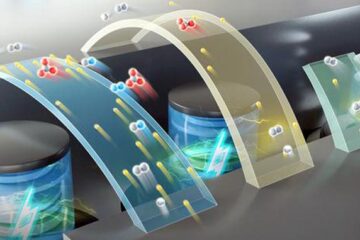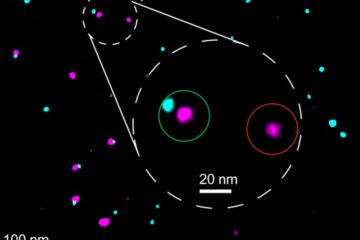Neutrons Born In Lightning

It turns out that a stroke of lightning produces thermonuclear reaction, which generates quite a noticeable stream of neutrons.
To produce thermonuclear reaction it is necessary, firstly, to have nuclei with a large quantity of neutrons available, for example, deuterium nuclei, and secondly, these nuclei should possess sufficiently high velocity and merge together upon collision, having overcome the Coulomb barrier. It turns out that all these conditions are observed in the course of a stroke of lightning – such a conslusion is evident from calculations by B.M. Kuzhevsky, Ph.D. (Physics&Mathematics), head of the neutron research laboratory, Skobeltsin Scientific Research Institute of Nuclear Physics (Moscow State University).
Deuterium is always present in water: on average, a molecule of DHO (water, where one of hydrogen atoms is replaced by deuterium) falls to 6,800 molecules of H2O. That means – taking into account the quantity of water vapour available in the atmosphere (i.e. 5×10^-4 g/cubic centimeter) – there will be 10^15 deuterium atoms per cubic centimeter. In lightning, these atoms turn into ions and are capable of gathering speed up to considerable energy. With the lightning canal diameter varying from 2 millimeters to 5 centimeters, and discharge duration making the ten-thousandth of a second, it proves that billions of deuterium atoms will have time to start reacting with each other and to generate precisely two times less atoms of helium-3 and neutrons. These neutrons already possess enormous energy – 2.45 MeV. However, in the atmosphere of our planet they are capable of living at most for 0.2 seconds, during which they will inevitably meet with nitrogen atoms and be absorbed by them. This time period is sufficient for neutrons to fly a distance of one or two kilometers.
The calculation has been also confirmed by experimental data. The DYAIZA facility developed at the Institute and installed in Moscow at the Vorobyevy Hills repeatedly recorded neutron emission peaks during thunderstorms, their magnitude exceeding that of the background by hundreds of times.
Several important conclusions can be drawn from the above effort. Firstly, this helps to solve a long-standing puzzle: why cosmonauts on board the MIR space station observed high neutron background in the area of the equator. Keeping in mind that thunderstorms permanently burst out in this region, it is easy to guess where high neutron background comes from. Secondly, the same mechanism should also work in the atmospheres of Venus and Jupiter where thunderstorms are also frequent and sporadic neutron streams should arise there. That means that investigation of these planets’ neutron emission should take into account this particular fact not to confuse by accident “thundery” neutrons with some other neutrons.
Media Contact
More Information:
http://www.informnauka.ruAll latest news from the category: Physics and Astronomy
This area deals with the fundamental laws and building blocks of nature and how they interact, the properties and the behavior of matter, and research into space and time and their structures.
innovations-report provides in-depth reports and articles on subjects such as astrophysics, laser technologies, nuclear, quantum, particle and solid-state physics, nanotechnologies, planetary research and findings (Mars, Venus) and developments related to the Hubble Telescope.
Newest articles

High-energy-density aqueous battery based on halogen multi-electron transfer
Traditional non-aqueous lithium-ion batteries have a high energy density, but their safety is compromised due to the flammable organic electrolytes they utilize. Aqueous batteries use water as the solvent for…

First-ever combined heart pump and pig kidney transplant
…gives new hope to patient with terminal illness. Surgeons at NYU Langone Health performed the first-ever combined mechanical heart pump and gene-edited pig kidney transplant surgery in a 54-year-old woman…

Biophysics: Testing how well biomarkers work
LMU researchers have developed a method to determine how reliably target proteins can be labeled using super-resolution fluorescence microscopy. Modern microscopy techniques make it possible to examine the inner workings…





















